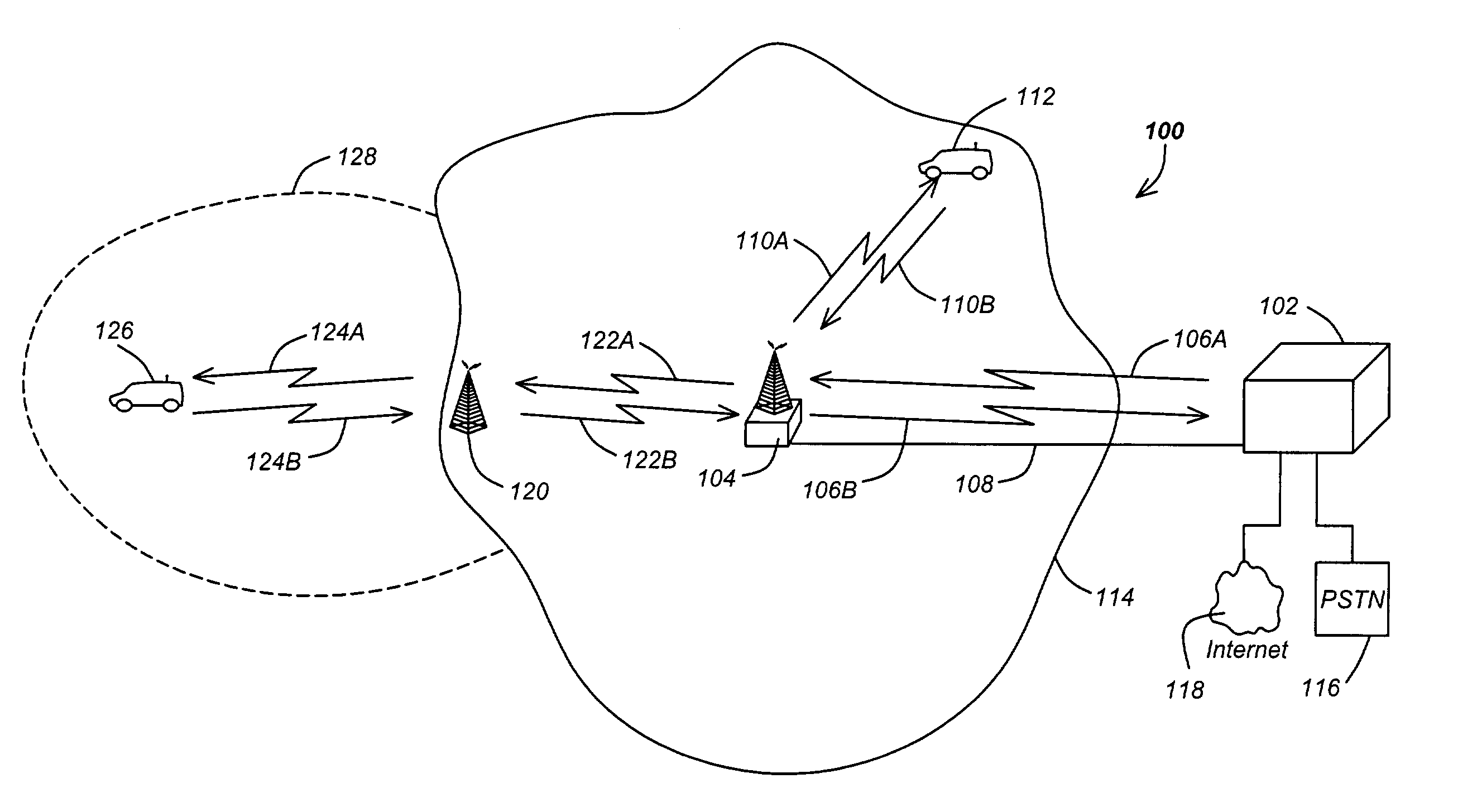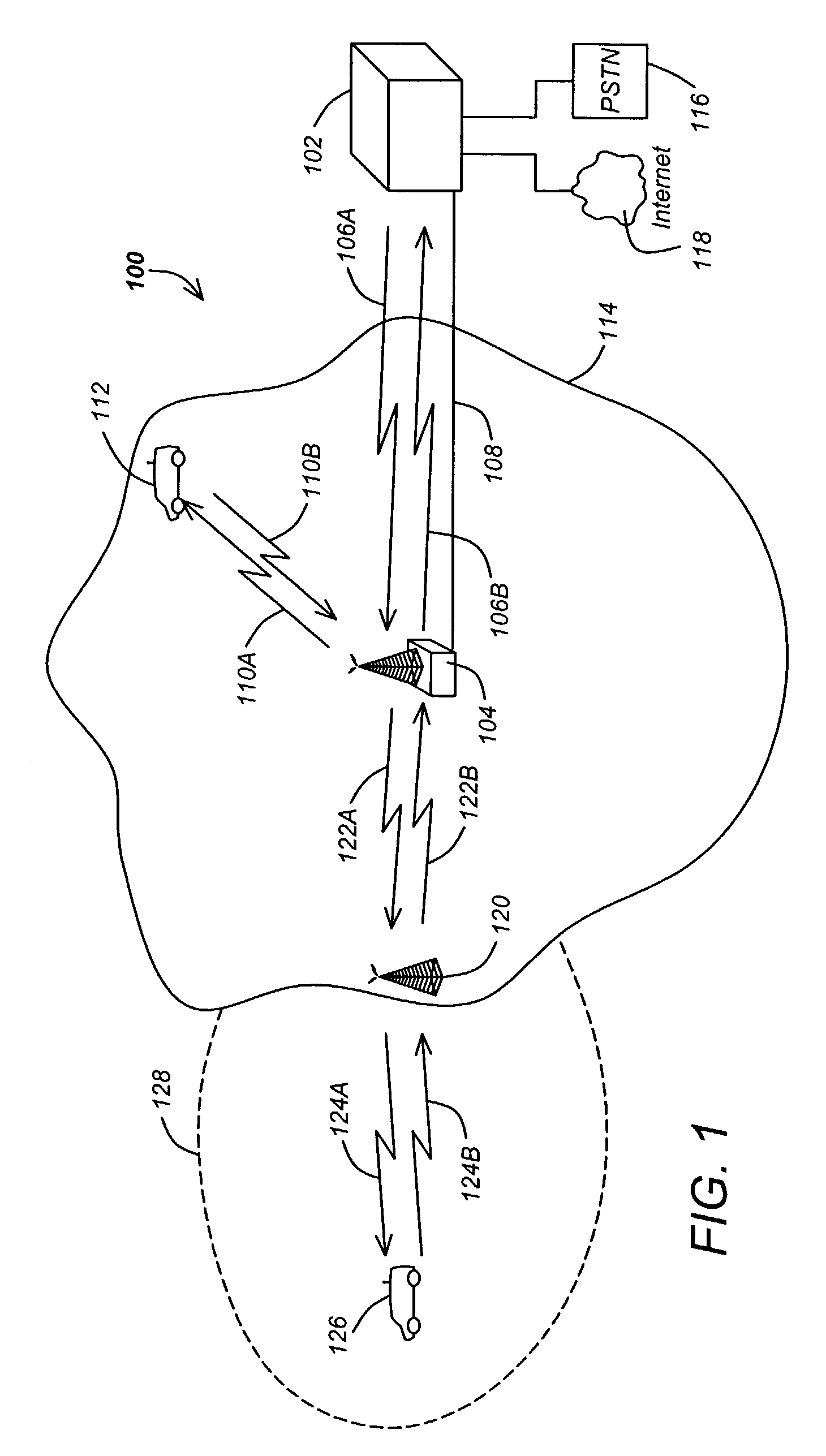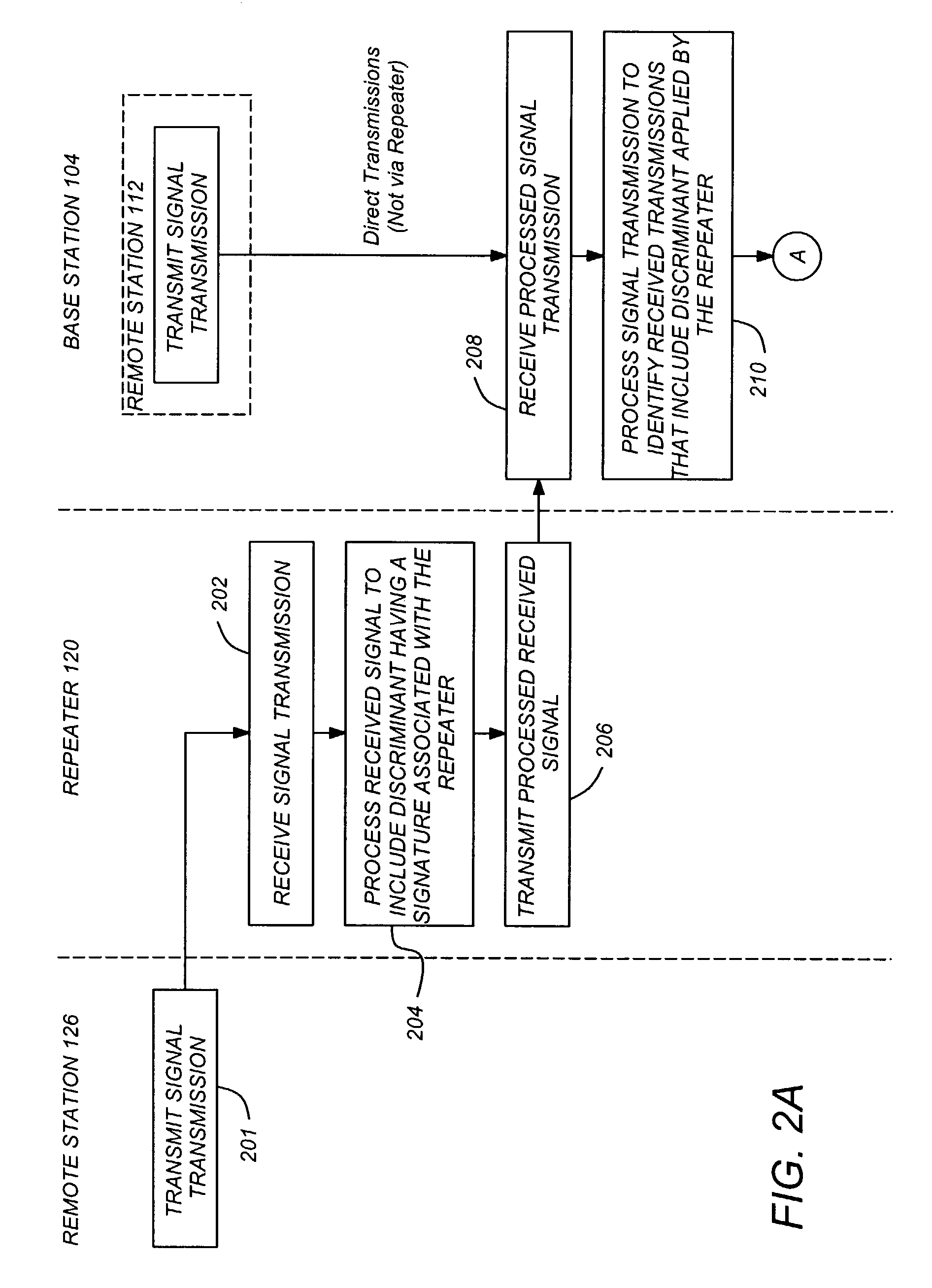Method and system for identifying and monitoring repeater traffic in a code division multiple access system
a multiple access system and repeater technology, applied in the field of methods and systems for transceiving information, can solve problems such as difficulty, compromise of usual means of determining the location of users, and difficulty, and achieve the effect of increasing (or decreasing) the repeater coverage area and preventing undesirable operational characteristics
- Summary
- Abstract
- Description
- Claims
- Application Information
AI Technical Summary
Benefits of technology
Problems solved by technology
Method used
Image
Examples
Embodiment Construction
[0034]In the following description of an embodiment, reference is made to the accompanying drawings, which form a part hereof, and in which is shown by way of illustration a specific embodiment in which the invention may be practiced. It is to be understood that other embodiments may be utilized and structural changes may be made without departing from the scope of the present invention.
[0035]FIG. 1 is a diagram of a cellular telephone system 100. The cellular telephone system 100 comprises one or more control stations 102, and a plurality of base stations 104. The base stations 104 communicate with remote stations 112 that are within the service area 114 of the base station 104. The remote stations 112 may be mobile stations (e.g. car phones or handheld cellphones) or fixed stations. The service area 114 is generally described as the geographical extent of a locus of points for which a remote station 112 can communicate effectively with the base station. Although the shape of the s...
PUM
 Login to View More
Login to View More Abstract
Description
Claims
Application Information
 Login to View More
Login to View More - R&D
- Intellectual Property
- Life Sciences
- Materials
- Tech Scout
- Unparalleled Data Quality
- Higher Quality Content
- 60% Fewer Hallucinations
Browse by: Latest US Patents, China's latest patents, Technical Efficacy Thesaurus, Application Domain, Technology Topic, Popular Technical Reports.
© 2025 PatSnap. All rights reserved.Legal|Privacy policy|Modern Slavery Act Transparency Statement|Sitemap|About US| Contact US: help@patsnap.com



